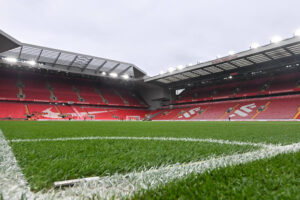Welcome to a new series of articles that focus on the role that football can play in shaping the environment and local communities.
Ecology comes from the Greek oikos or oikeos which means ‘house’, and thus refers to the interconnected nature of everything human and non-human.
Football ecologies can be small and large, from the ecology of a dressing room to a huge stadium and its local communities.
Today, on World Environment Day, we look at Tottenham Hotspur ‘s publication of the initiatives that they take to reduce their impact on the earth.
Football Ecologies: Tottenham Hotspur on World Environment Day
Greener Since 2009
Tottenham was a founding member of the 10:10 initiative, which promises to cut emissions by 10 per cent in a year. This has gone on since 2009.
The club have listed their core policies:
- “Recycle any waste products generated across the Club where possible and increase waste diversion away from landfill.
- Reduce our single-use plastic footprint with the aim of eliminating its use across Club operations, seeking to source more environmentally sustainable materials where possible.
- Educate and inspire young people in our communities through the work of the Tottenham Hotspur Foundation.
- Promote alternative forms of transport for fans and staff to and from the stadium and Training Centre that have a reduced impact on the environment.
- Identify locally and sustainably sourced food options to cater for various dietary requirements, including plant-based food options, at our stadium.”
Details
In the article on the official club website, there are a host of details concerning their attempt to reduce waste and preserve the environment.
Food, Drink, Consumables
Some plant-based supporters will already know of the vegetarian and vegan food available at the ground. The battered tofu and chips is a really good version of fish and chips.
The club have trialled a reusable beer cup scheme. Cups are used, disposed of, then collected before being washed and returned for the next use.
No single-use plastics are used in terms of cutlery. There is also compostable packaging for sandwiches.
Training Centre
This facility isn’t just a world-class training venue. It is also world-class for its consideration of the environment. This includes a ‘green roof’ which help to reduce surface runoff to use rainwater within the facilities.
The club has restored hedgerows and field boundaries. It has also planted other flora, made bug hotels and has its very own organic kitchen garden and orchard.
There are 300 new and semi-mature trees planted, as well as thousands of other flora found on-site.
Solar panels and air source heat pumps are utilised at the training ground to provide some renewable energy sources.
Significance
Spurs are borrowing from the Bank of England due to their massive stadium cost and being unable to make as much revenue with the coronavirus suspending football. But, the reason that the stadium cost so much is due in part to ensure that every part of this stadium is top class.
This is a stadium that is levels upon levels above the old White Hart Lane. A large part of this is indeed due to the new efficiency of the stadium. The increased capacity means that has to be more measures in order to ensure sustainability.
Improvements
The club note that 60% of fans travelled to the stadium by car in 2003. By 2014 this was reduced to 42% but only for weekend fixtures. They plan to reduce the figure to just 24%.
For a full stadium capacity of 60,000, encouraging public transport would cut out a lot of emissions.
This might be a difficult goal to achieve since it is largely up to the fans. The club can do what they can, though, to encourage the use of public transport. With the new stadium and the sheer amount of supporters coming to matches, this could reduce the number slightly since getting out of the ground would be a nightmare.
Of course, increasing public transport would mean reducing the traffic that clogs up local roads and parks near residential driveways.
Main Photo






